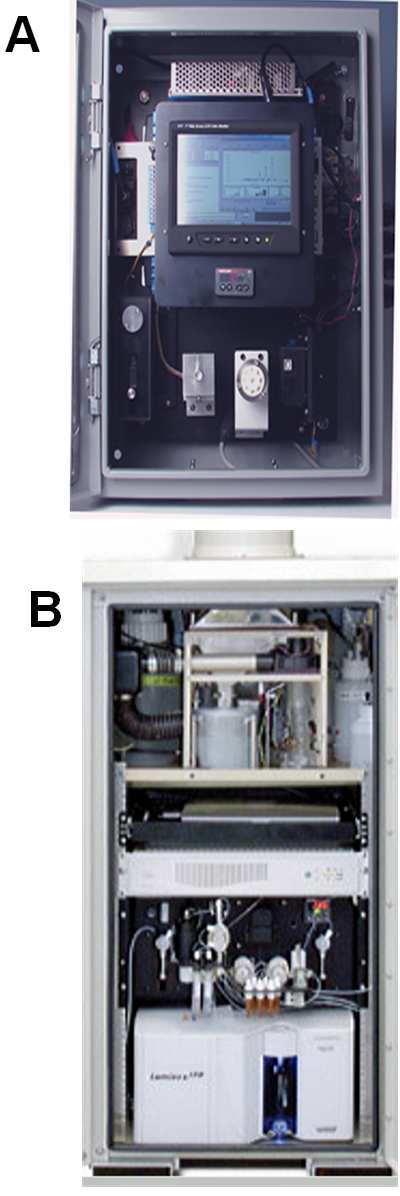Sequential Injection was initially proposed as a tool for continuous monitoring of industrial processes (Ruzicka and Marshall 1990), but it took many years before SIA became developed to function as a reliable device in a industrial environment.
The route to successful development of process control analyzer is to work out, the desired assay in the laboratory, and then to “industrialize” the hardware and software to comply with process and regulatory requirements, and by packaging it into a suitable enclosure (A). The advantage of this approach is that the core of the instrument (fluidics, detector, chemistry) is the same in the laboratory and in the process control system, a similarity, which facilitates troubleshooting since any malfunction can be duplicated and rectified in the laboratory, even as far away from the industrial location.
There is no shortage of target analytes that need to be monitored, often in 24/7 mode, with a minimum of supervision. Acidity, alkalinity, and pH are the most frequently monitored parameters in the chemical industry, followed by glucose, ammonia, other nutrients and biomass in biotechnology, surfactants and polyammonium compounds in the electronic industry and dyes in the textile industry.
Continuous monitoring of pathogens (B), for biological threat agents is an example of a very complex bio assay, based on microfluidic manipulation of microbeads, coated with various antibodies. Each microbead is color coded using a unique combination of red- and orange- fluorescence emitting dyes. The beads are transported in the Sequential Injection mode trough a sequence of microfluidic manipulations, into a flow cytometer for detection.
The monitor was developed by Global FIA under the name Zone Fluidics , in conjunction with Lawrence Livermore National Laboratory (LLNL) and commercialized by Northrop Grumman Security Systems (NGSS). The instrument can measure multiple agents per sample and reports identified agents within an hour.
Hindson, B., Brown, S., Marshall, G., McBride, M., Makarewicz, A., Gutierrez, D., et al. (2004).
Anal. Chem., 76(13), 3492-3497.
Process Control Instruments
2.5.3.










